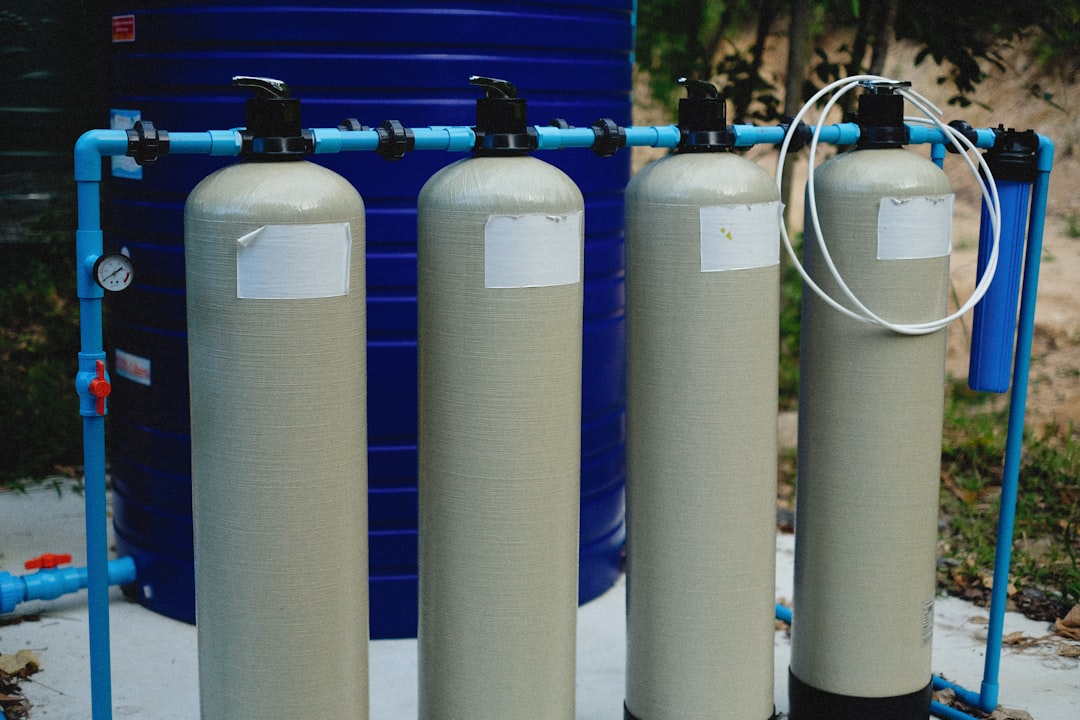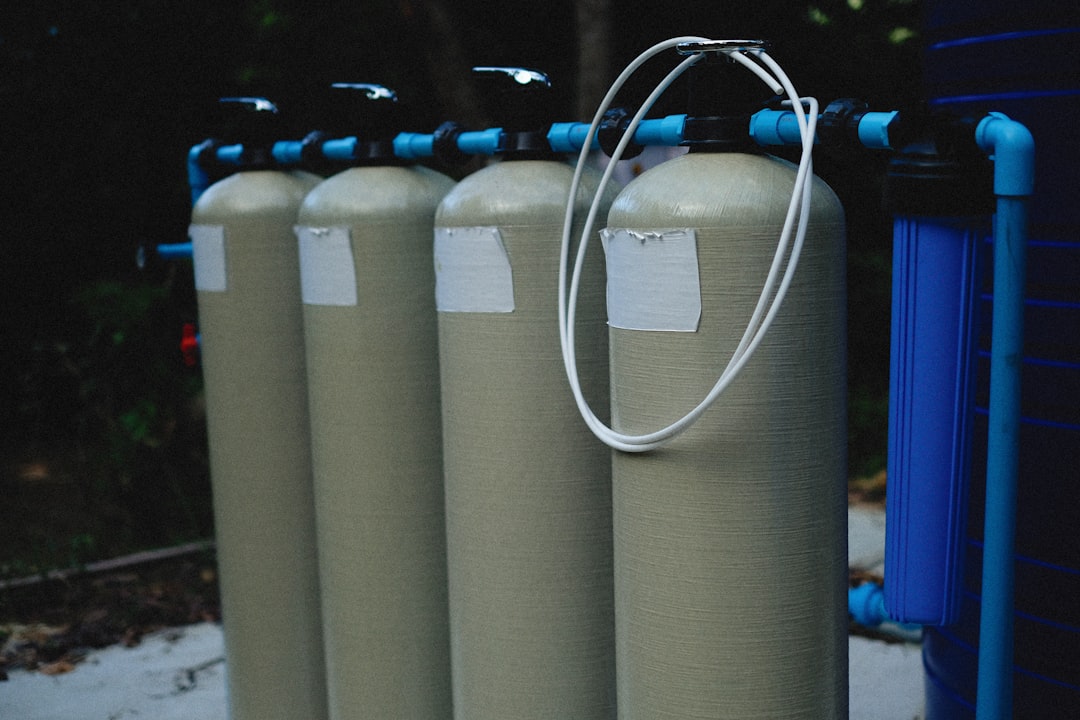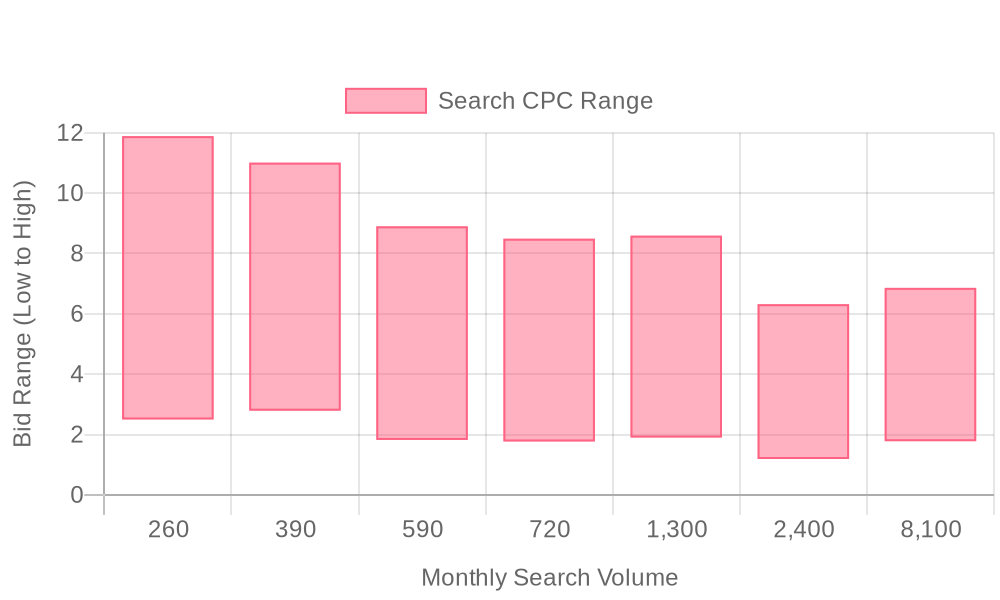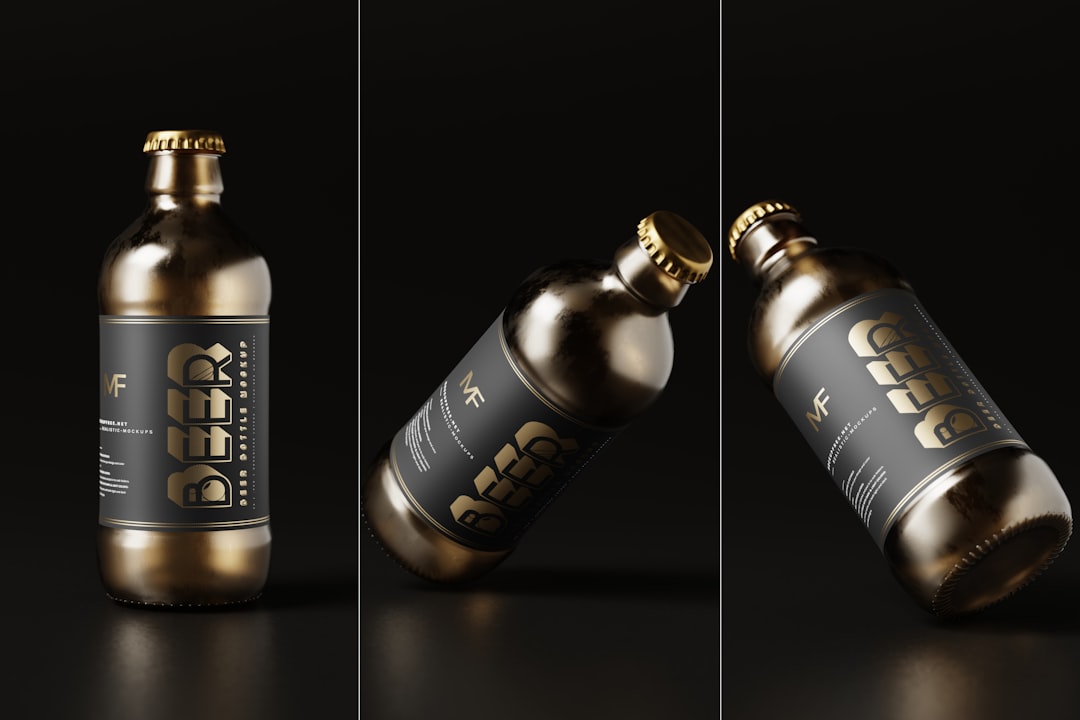
Supercharge your lead generation with a FREE Google Ads audit - no strings attached! See how you can generate more and higher quality leads
Get My Free Google Ads AuditFree consultation

No commitment
Supercharge your lead generation with a FREE LinkedIn Ads audit - no strings attached! See how you can generate more and higher quality leads
Get My Free Google Ads AuditFree consultation

No commitment
Supercharge your lead generation with a FREE Meta Ads audit - no strings attached! See how you can generate more and higher quality leads
Get My Free Google Ads AuditGet My Free LinkedIn Ads AuditGet My Free Meta Ads AuditFree consultation

No commitment
Supercharge your lead generation with a FREE Google Ads audit - no strings attached! See how you can generate more and higher quality leads
Get My Free Google Ads AuditFree consultation

No commitment
In today's complex marketing landscape, effective B2B marketing for medical gas suppliers requires a strategic mix of online and offline channels working in harmony. While online channels like social media raise brand awareness, email marketing nurtures ongoing relationships, and SEO drives organic visibility, offline channels such as trade shows facilitate face-to-face connections, direct mail establishes tangible touchpoints, and industry publications reinforce thought leadership. Within this integrated ecosystem, Google Ads plays a crucial middle-funnel role by capturing high-intent healthcare professionals at the moment they are searching for solutions. This effectively bridges the gap between broader awareness efforts and the conversion process.

Medical gas suppliers operate in a specialized B2B market where lead quality directly impacts long-term revenue and contract stability. Generating qualified leads requires a strategy that balances compliance, technical specificity, and precision targeting to reach decision-makers in hospitals, clinics, and research institutions. For foundational strategies and best practices tailored to healthcare advertising, review this comprehensive guide to healthcare Google Ads, and explore our blog library for in-depth demand generation insights.
Successful Google Ads campaigns for medical gas suppliers must account for strict healthcare advertising regulations while leveraging data-driven tactics to engage high-intent procurement teams. By integrating real-time visitor identification and intent data, suppliers can dynamically allocate budget toward accounts showing immediate purchase signals, increasing conversion rates and accelerating sales cycles.
A unified data approach allows marketers to build granular audience segments based on industry, organization size, and historical engagement. Syncing CRM and ad platforms ensures that campaign audiences automatically update as leads progress through qualification stages, enabling personalized messaging and reducing wasted spend. This closed-loop process also supports advanced conversion tracking, linking digital interactions to offline sales and providing a true picture of ROI for complex, high-value contracts.
The following framework outlines each step required to launch and optimize Google Ads campaigns for medical gas suppliers, from keyword development to compliance checks and ongoing performance analysis. To see how you can streamline your campaign management and optimize targeting at every stage, get started for free with Sona. Each stage emphasizes the importance of actionable data, cross-channel integration, and regulatory alignment for sustained lead generation in this highly regulated sector.

Medical gas suppliers operate in a tightly regulated, high-stakes environment where procurement cycles are long and buying committees are complex. Google Ads offers a direct channel to reach hospital buyers, facility managers, and clinical procurement specialists, ensuring suppliers appear at the exact moment these stakeholders research new vendors or prepare tenders. For an overview of key advertising restrictions that can impact your campaigns, see the most common Google Ads restrictions for pharma.
In an industry where compliance, safety, and reliability are top priorities, digital advertising must deliver more than generic impressions. By leveraging search intent and contextual targeting, medical gas suppliers can efficiently connect with decision-makers who are actively evaluating installation partners, equipment upgrades, or emergency response solutions, reducing wasted spend and accelerating qualified pipeline growth. To explore how you can streamline your digital advertising and reach the right buyers, get started for free with Sona.

Medical gas suppliers benefit from a focused array of Google Ads campaign types designed to match the decision cycles and compliance standards of healthcare procurement. Each campaign format enables suppliers to reach distinct buyer personas, from hospital facility managers to clinical procurement teams, while supporting seamless compliance with healthcare advertising regulations. To further refine campaign strategies and stay current on digital marketing trends, explore our collection of articles on marketing and attribution best practices.
By combining these campaign types with modern data integration and real-time audience enrichment, medical gas suppliers achieve a cohesive digital marketing approach. This ensures every ad dollar is targeted to the highest opportunity accounts, supports strict compliance, and maximizes lead generation efficiency for complex B2B sales cycles. To start building smarter campaigns and unlock high-value opportunities, get started for free with Sona.

Medical gas suppliers operate in a highly specialized market where growth hinges on identifying and targeting the right segments with precision. Opportunities arise by leveraging digital intent data to reveal hospital networks, surgical centers, and research labs actively searching for compliant gas solutions. Marketers who invest in granular site analytics gain clarity not just on traffic volume but on which facilities and procurement teams are expressing in-market interest.
Successful campaigns for medical gas suppliers start with high-value keyword research focused on commercial buying signals. Terms such as “bulk medical oxygen supplier,” “emergency gas resupply,” and “NFPA 99 compliant pipeline installation” attract procurement professionals ready to engage. Supplementing this with negative keyword lists prevents wasted budget on irrelevant searches like job postings or consumer-focused terms, ensuring spend is directed at true buyers. For additional insight, review this list of high-performing keywords for medical equipment.
Growth accelerates when suppliers move beyond static targeting and adopt dynamic audience segmentation. By tracking how healthcare organizations interact with technical documents and RFQ forms, teams can update remarketing audiences as leads progress through their decision cycle. Integration with real-time visitor identification enables the pinpointing of specific hospital systems, alerting sales to high-intent behaviors such as specification sheet downloads. This translates into prioritized outreach and tailored messaging, directly impacting conversion rates and contract velocity.
Synchronizing CRM and Google Ads data eliminates blind spots in the sales funnel. Offline activities—such as site visits, demos, or compliance consultations—are connected to digital touchpoints, providing a holistic view of each account’s journey. This unified approach allows marketers to spot gaps in the pipeline, identify nurture opportunities, and optimize spend allocation toward segments demonstrating the highest propensity to convert. The result is a more resilient and scalable demand generation engine, tailored to the unique needs and compliance standards of the medical gas sector. To see how you can achieve this, get started for free with Sona.
Audience segmentation is essential for medical gas suppliers competing in a niche, highly regulated market. Reaching decision makers at hospitals, clinics, and research facilities requires a granular understanding of buying roles, procurement cycles, and clinical application needs. When segmentation is guided by real-time audience data—such as which organizations are downloading spec sheets or requesting compliance documentation—marketers can dynamically adjust spend and messaging to prioritize high-value accounts.
Advanced segmentation strategies begin by mapping target accounts into distinct cohorts: hospital procurement leads, biomedical engineers, clinical operations managers, and facilities teams. Each group has unique decision drivers, from compliance and uptime guarantees to technical installation requirements. By integrating visitor identification technology, marketers can pinpoint which organizations visit key landing pages or interact with product selectors, going beyond anonymous traffic to identify specific companies evaluating solutions. For insight on medical gas systems and their applications in healthcare environments, see this introduction to medical gas systems.
Segmented campaigns benefit from synchronized CRM and ad platform workflows. When a lead downloads a pipeline compliance whitepaper or books a demo, enriched profile data can automatically sync with Sona Destinations, triggering tailored retargeting and lookalike campaigns. This approach ensures that budget is concentrated on accounts exhibiting active intent, driving higher conversion rates and more efficient use of spend. For medical gas suppliers, segmenting by organization type, geography, and real-time engagement data consistently delivers a stronger pipeline and measurable lift in sales-qualified opportunities. To see how segmentation can drive results for your team, get started for free with Sona.

| Industry | Keyword | Monthly Search Volume | Competition Level | Low Bid | High Bid |
| Medical Gas Suppliers | medical gas suppliers near me | 260 | LOW | 2.5 | 11.89 |
| Medical Gas Suppliers | medical gas suppliers | 390 | LOW | 2.79 | 11.01 |
| Medical Gas Suppliers | oxygen suppliers for home use | 590 | HIGH | 1.82 | 8.9 |
| Medical Gas Suppliers | medical oxygen suppliers | 720 | HIGH | 1.77 | 8.49 |
| Medical Gas Suppliers | medical oxygen supply near me | 1300 | HIGH | 1.9 | 8.59 |
| Medical Gas Suppliers | oxygen suppliers | 2400 | HIGH | 1.19 | 6.32 |
| Medical Gas Suppliers | oxygen suppliers near me | 8100 | HIGH | 1.78 | 6.86 |
Effective keyword architecture is the backbone of any high-performing Google Ads program for medical gas suppliers. Medical gas buyers use highly specific and commercially driven queries, often tied to technical requirements, compliance standards, and urgent healthcare needs. Winning strategies focus on intent-rich, industry-specific search terms and build negative lists that filter out irrelevant or non-commercial traffic. For a comprehensive list of high-performing terms, reference this medical equipment keywords list to inform your campaigns, and explore the Sona blog for additional keyword targeting strategies.
Refining keyword lists with negative terms is critical for budget efficiency. Exclude searches related to job seeking (“medical gas technician jobs”), academic use (“properties of medical oxygen”), and home consumer applications (“portable oxygen for home”). This ensures spend is focused on high-value B2B buyers rather than unrelated audiences.
With advanced platforms, marketers can use real visitor identification to observe which keywords drive engagement from hospital procurement teams or clinical engineers. By linking anonymous site visits to real accounts and layering real-time audience intent data, teams can dynamically adjust keyword bids to prioritize prospects showing immediate buying signals. As buyers engage with technical resources, dynamic audiences update in real time, allowing medical gas suppliers to retarget decision-makers with relevant ad copy and offers, while syncing these enriched segments directly into CRM and Google Ads workflows for seamless sales follow-up. This precision targeting not only elevates ROI but also reduces wasted spend by ensuring only qualified, in-market healthcare buyers see your campaigns. To experience this workflow, get started for free with Sona.
Launching a high-performing Google Ads program for medical gas suppliers requires a methodical approach that addresses both industry compliance and precision targeting. Each step in the execution framework is tailored to maximize reach among healthcare procurement teams, ensure regulatory adherence, and drive measurable ROI across complex sales cycles. For more strategies on driving demand and optimizing campaigns, explore our marketing best practices.
Effective campaigns begin by constructing keyword lists that reflect both the technical specificity and commercial intent unique to medical gas buyers. Focus on terms such as "bulk medical oxygen supply," "medical gas pipeline installation," and "NFPA 99 compliant gas systems," while excluding unrelated queries through negative keywords like “home oxygen concentrator” or “gas technician jobs.” By regularly analyzing search term reports and layering in new industry phrases, marketers stay ahead of shifting demand and keep ad spend tightly aligned with high-value prospects. For inspiration, review this list of high-performing keywords for medical equipment.
Leveraging visitor identification allows marketers to correlate inbound searches with actual healthcare organizations and procurement contacts. As a result, keyword prioritization becomes far more data-driven, ensuring that ad groups are refined around the search behaviors of decision-makers most likely to convert.
Precision audience segmentation is critical in medical gas advertising, where buyer roles and intent vary by facility type and procurement cycle. Create layered audiences using parameters such as hospital size, geographic region, and job function—procurement, facilities management, and clinical engineering. Pairing these segments with behavioral indicators (e.g., recent RFQ activity, technical document downloads) improves ad relevance and increases conversion probability. For more on dynamic segmentation, see how real-time audience creation can empower your targeting.
Dynamic audience updates based on engagement data mean that as leads progress from research to purchase intent, they automatically receive tailored messaging. Integrating CRM data with Google Ads ensures that high-value targets receive timely follow-up ads, while stagnant accounts are reallocated budget elsewhere. To deepen your segmentation strategy, discover buying stage segmentation advantages.
Crafting ad copy for medical gas suppliers demands a balance of technical detail, compliance, and buyer reassurance. Reference credentials such as FDA or ISO certifications, highlight emergency delivery capabilities, and use structured snippets to showcase service lines like pipeline installation or compliance audits. Utilize callout and location extensions to reinforce trust and guide buyers to regional distribution centers. Get insights into common Google Ads restrictions for pharma that may also impact medical gas campaigns.
Continuous monitoring of healthcare advertising policies and content approval workflows reduces disapproval rates and protects campaign integrity. Landing page messaging should mirror ad claims and be validated for compliance, with technical resources gated behind verification flows to ensure access by qualified professionals. For more on advertising guidelines, review the official Google Ads policy.
Robust conversion tracking is essential for accurately measuring funnel performance in the medical gas sector, where sales cycles frequently span months and involve multiple stakeholders. Implement tracking for both immediate actions—such as RFQ submissions and callback requests—and longer-term touchpoints like technical document downloads or demo bookings. Learn how to track conversions and attribution effectively across your campaigns.
Synchronizing Google Ads conversion data with CRM platforms enables full-funnel attribution, connecting online engagement to offline sales outcomes. This unified view empowers marketers to identify which campaigns and keywords drive the largest contracts and highest-value accounts, refining budget allocation for maximum impact. Accelerate your data-driven approach by connecting ad conversion data directly to your CRM and reporting systems.
After launching campaigns, continuous monitoring ensures timely adjustments based on real-time performance. Track key metrics such as cost per qualified lead, conversion rate by keyword, and engagement by audience segment. Automated alerting can signal when specific facilities or regions show surges in demand, allowing for rapid budget reallocation to capitalize on urgent needs. For a comprehensive guide, review PPC optimization strategies for healthcare sectors.
Using real-time intent signals and visitor identification, marketers can immediately recognize high-value hospital networks engaging with ads or landing pages. This proactive approach accelerates sales outreach and improves close rates, as sales teams receive prioritized alerts tied directly to high-intent activity.
For sustained growth, align Google Ads efforts with broader marketing and sales programs. Use insights from paid campaigns to inform content creation—developing case studies, compliance guides, and technical webinars that address common buyer concerns. Integrate lead data with sales automation tools, ensuring that every high-intent interaction triggers a tailored nurture sequence or sales callback, driving seamless progression from first click to contract.
This closed-loop approach bridges digital and offline engagement, enabling medical gas suppliers to build authority, capture demand at every stage, and demonstrate clear ROI to executive stakeholders. For additional best practices in optimizing healthcare PPC, review ppc for medical suppliers strategies. To experience streamlined campaign management, get started for free with Sona.

Expanding your reach as a medical gas supplier requires precision across every digital touchpoint. Focused strategies in Google Ads can boost visibility to procurement professionals, hospital administrators, and specialized clinic buyers who drive meaningful conversions. For actionable insights on optimizing PPC campaigns in healthcare, explore this comprehensive guide to healthcare PPC advertising and stay updated on the latest marketing best practices.
A data-driven approach—unifying visitor data, intent signals, and CRM insights—empowers medical gas suppliers to capture market share, streamline demand generation, and deliver measurable ROI in a highly regulated environment. Ready to elevate your reach? Get started for free with Sona.
In conclusion, leveraging Google Ads for medical gas suppliers offers a powerful opportunity to enhance online visibility and effectively reach potential customers in the healthcare sector. By understanding the unique dynamics of this industry and tailoring your advertising strategies to meet its specific needs, you can significantly improve your market presence and drive meaningful engagement.
Throughout this article, we've explored the challenges faced by medical gas suppliers in the digital landscape, such as strict regulatory requirements and niche audience targeting. We also discussed key strategies like keyword optimization, compliance with advertising policies, and creating compelling ad content. By implementing these insights, suppliers can overcome hurdles and unlock new growth opportunities.
As you embrace these strategies, envision the transformative impact they can have on your business—providing clarity, focus, and a competitive edge. With the right tools and knowledge, you're empowered to connect with your target audience more effectively and drive substantial business results.
To experience how our platform can enhance your advertising efforts, start for free and discover its capabilities today.
Best practices include leveraging precise keyword targeting, utilizing audience segmentation, ensuring compliance with healthcare regulations, and integrating CRM data for dynamic retargeting.
Suppliers can optimize campaigns by using data-driven tactics, real-time intent signals, audience segmentation, and syncing CRM data with ad platforms to enhance targeting and personalization.
Advertising medical gases involves adhering to strict healthcare advertising regulations and Google Ads policies, which can include restrictions related to compliance, safety, and prescription gas advertising.
Keywords should focus on commercial intent and technical specifications, such as 'bulk medical oxygen supplier,' 'NFPA 99 compliant gas systems,' and emphasize urgency and compliance.
Effective ads should balance technical detail, compliance, and buyer reassurance, highlighting certifications and emergency capabilities, while using structured snippets and audience insights.
Join results-focused teams combining Sona Platform automation with advanced Google Ads strategies to scale lead generation

Connect your existing CRM

Free Account Enrichment

No setup fees
No commitment required

Free consultation

Get a custom Google Ads roadmap for your business
Join results-focused teams combining Sona Platform automation with advanced Meta Ads strategies to scale lead generation

Connect your existing CRM

Free Account Enrichment

No setup fees
No commitment required

Free consultation

Get a custom Google Ads roadmap for your business
Join results-focused teams combining Sona Platform automation with advanced LinkedIn Ads strategies to scale lead generation

Connect your existing CRM

Free Account Enrichment

No setup fees
No commitment required

Free consultation

Get a custom Google Ads roadmap for your business
Join results-focused teams using Sona Platform automation to activate unified sales and marketing data, maximize ROI on marketing investments, and drive measurable growth

Connect your existing CRM

Free Account Enrichment

No setup fees
No commitment required

Free consultation

Get a custom Google Ads roadmap for your business
Over 500+ auto detailing businesses trust our platform to grow their revenue
Join results-focused teams using Sona Platform automation to activate unified sales and marketing data, maximize ROI on marketing investments, and drive measurable growth

Connect your existing CRM

Free Account Enrichment

No setup fees
No commitment required

Free consultation

Get a custom Google Ads roadmap for your business
Over 500+ auto detailing businesses trust our platform to grow their revenue
Join results-focused teams using Sona Platform automation to activate unified sales and marketing data, maximize ROI on marketing investments, and drive measurable growth

Connect your existing CRM

Free Account Enrichment

No setup fees
No commitment required

Free consultation

Get a custom Google Ads roadmap for your business
Over 500+ auto detailing businesses trust our platform to grow their revenue
Our team of experts can implement your Google Ads campaigns, then show you how Sona helps you manage exceptional campaign performance and sales.
Schedule your FREE 15-minute strategy sessionOur team of experts can implement your Meta Ads campaigns, then show you how Sona helps you manage exceptional campaign performance and sales.
Schedule your FREE 15-minute strategy sessionOur team of experts can implement your LinkedIn Ads campaigns, then show you how Sona helps you manage exceptional campaign performance and sales.
Schedule your FREE 15-minute strategy sessionOur team of experts can help improve your demand generation strategy, and can show you how advanced attribution and data activation can help you realize more opportunities and improve sales performance.
Schedule your FREE 30-minute strategy sessionOur team of experts can help improve your demand generation strategy, and can show you how advanced attribution and data activation can help you realize more opportunities and improve sales performance.
Schedule your FREE 30-minute strategy sessionOur team of experts can help improve your demand generation strategy, and can show you how advanced attribution and data activation can help you realize more opportunities and improve sales performance.
Schedule your FREE 30-minute strategy sessionOur team of experts can help improve your demand generation strategy, and can show you how advanced attribution and data activation can help you realize more opportunities and improve sales performance.
Schedule your FREE 30-minute strategy session





Launch campaigns that generate qualified leads in 30 days or less.
